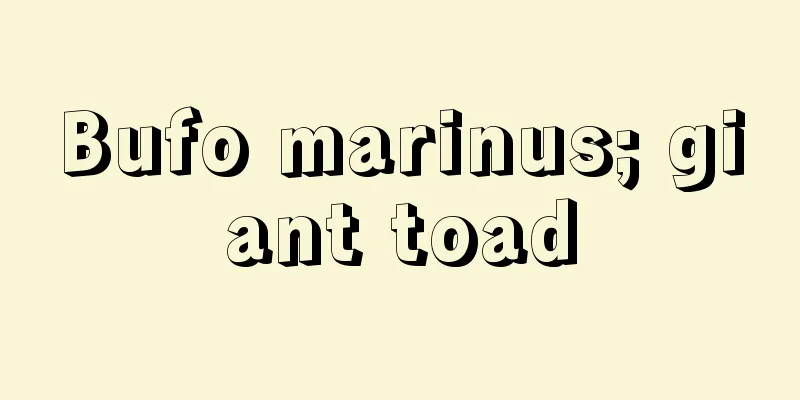Etruscans - Etruriajin (English spelling) Etrusci (Latin)

|
In the first millennium BC, they were a people who had their own language and developed a unique urban culture, mainly in Etruria (present-day central Italy). They called themselves Rasenna (Rasna), were called Etrusci or Tusci by the Romans (the name Tuscany comes from Tusci), and Tyrsenoi (Tyrrhenoi) by the Greeks. They reached their heyday in the 7th and 6th centuries BC, but were overwhelmed by Rome from the 4th century onwards, and were annexed by the Roman state by 90 BC. They founded many cities in Etruria, Campania and the Po River basin, and these cities were mostly independent and autonomous city-states. The 12 major Etruscan city-states formed a federation, but no unified state that unified all the Etruscans was formed. Although few remains of their cities themselves remain, numerous remains of tombs have been discovered along with numerous grave goods, providing the most valuable information on their history and culture. Other sources include Greek and Roman documents, and more than 10,000 inscriptions written in Etruscan remain to this day. However, most of these inscriptions (although perfectly legible, as they are a variant of Greek) have not been deciphered with any certainty. Etruscan has no proven relationship with other languages (at least not with Indo-European), making it almost impossible to elucidate it by comparison with other languages, and no large inscriptions with translations have been found. The Etruscans did not emerge as a distinct ethnic group until the 8th century BC. There has been a conflict between the theory that they came from the Orient and the theory that they were indigenous to Italy, but the issue has not been resolved. Recently, the question of how they formed as an ethnic group in Italy has been raised. In any case, in the 7th century BC, the Orientalized culture replaced the traditional Villanova culture in cities along the Tyrrhenian Sea, such as Caere and Tarquinii. Both developed the mines in their hinterlands (copper, lead, iron, silver), cultivated the fertile farmland, embarked on overseas trade, and built prosperity. A little later, cities further inland, such as Veii, Vulci, Clusium, and Volsinii, also developed. These Etruscan city-states had a significant influence on the early Roman period. For about 100 years since the end of the 7th century BC, Rome was ruled by Etruscan kings, who built cities, established national systems, and grew into the leading city-state in Latium. On the other hand, Etruscan cities allied with Carthage to oppose Greek colonies in southern Italy. Although the Etruscans won a naval battle in 540 BC, they were defeated by the Greeks in the Battle of Cumae in 474 BC, and since then they lost control of the Tyrrhenian Sea, and their cities fell into economic stagnation. At the same time, they lost Campania and moved to the Po River basin. However, the Celts had been invading from the north since the end of the 5th century BC, and Rome was expanding its power in the center. Rome first conquered Veii in 396 BC, and then conquered Etruscan city-states one after another, and by the middle of the 3rd century BC, most of them had become allies. In 90 B.C., at the outbreak of the War of the Leagues, the Etruscans gained Roman citizenship and their cities became municipalities within the Roman Empire. The Etruscan language was soon replaced by Latin. Their religion was polytheistic, but it seems that their religious practices, such as divination, were retained during the Roman Empire. The Etruscan city-states moved from early monarchies to republics by the end of the 5th century BC, with magistrates and the senate holding real political power. Under the ruling aristocracy were free people, as well as dependents and slaves. The lower classes often attempted rebellions in the late Republic, and gradually gained political rights. Women had a high status in Etruria, and they attended banquets and games with men. However, they did not have the right to vote. The Etruscans absorbed Greek culture before Rome came into direct contact with it, and civilized the early Italian peoples. In addition to city building methods, architectural techniques, drainage and irrigation techniques, and political systems, they also introduced writing to the Italian peoples. The Etruscan cultural heritage was then passed on to Rome. With the fall of the Western Roman Empire, the Etruscans were forgotten. Some of their cities are completely ruined (Vei, Bruci, etc.), while others have survived through the Middle Ages and modern times. For example, Perugia is built on top of an ancient Etruscan city, and the city walls and gates from the Etruscan period remain. The outskirts of Tarquinia are dotted with tombs with murals, and Cerveteri (Caere) is home to a city of the dead, a large number of tombs. Excavations are still being carried out in various parts of Etruscan Italy, the ruins are being preserved, and countless artifacts are stored and exhibited in the Villa Giulia Museum, the Vatican Museums, and the Florence Archaeological Museum in Rome. [Ryuichi Hirata] [References] |©Shogakukan "> Major Etruscan cities Source: Shogakukan Encyclopedia Nipponica About Encyclopedia Nipponica Information | Legend |
|
紀元前一千年紀、エトルリア(現イタリア中部)を中心に固有の言語をもち、独自の都市文化を発展させた民族。彼らはラセンナRasenna(ラスナRasna)と自称し、ローマ人にはエトルスキまたはトゥスキTusciとよばれ(トスカナという地方名はトゥスキに由来する)、ギリシア人にはチルセーノイTyrsenoi(チレーノイTyrrhenoi)と称された。前7~前6世紀に全盛期を迎えたが、前4世紀以降ローマに圧倒され、前90年までにローマ国家に併合された。彼らは、エトルリアをはじめカンパニアやポー川流域に多くの都市を建てており、これらの都市はたいてい独立自治の都市国家であった。エトルリアの主要12都市国家は連合を結成したが、全エトルリア人を統合する統一国家は形成されなかった。 彼らの都市そのものの遺跡は少ないが、おびただしい数の墓の遺跡が無数の副葬品とともに発見されており、彼らの歴史と文化を知るためのもっとも貴重な資料となっている。史料としては、ほかにギリシア、ローマの文献があり、さらにエトルリア語で記された銘文が現在1万点以上残されている。ただし、これらの銘文の大部分は(その文字はギリシア文字の変種なので完全に読めるのであるが)確実には解明されていない。エトルリア語は、他の言語との近親関係が実証されておらず(少なくとも印欧語ではない)、他言語との比較によってこれを解明することはほとんど不可能であり、また対訳付きの大碑文は発見されていない。 エトルリア人が明確な一民族として登場するのは前8世紀以降である。彼らの起源については、おもにオリエント渡来説とイタリア土着民説とが対立してきたが、決着をみていない。最近ではむしろ彼らがイタリアの地で民族としていかに形成されたかが問題とされている。ともあれ前7世紀になると、従来のビッラノーバVillanova文化にかわって東方化様式文化がカエレCaereやタルクィニーTarquiniiなどティレニア海沿岸都市に現れた。いずれも後背地の鉱山(銅、鉛、鉄、銀)を開発し、豊かな耕地を開墾して、海外貿易に乗り出し、繁栄を築いた。やや遅れてウェイイVeii、ブルチVulci、クルーシウムClusium、ウォルシニーVolsiniiなどの、より内陸の都市も発展した。これらのエトルリア都市国家は、黎明(れいめい)期のローマに重大な影響を及ぼした。前7世紀末以来約100年間、ローマはエトルリア系の王に統治され、彼らによって都市が建設され、国制が整えられ、ラティウム随一の都市国家へと成長したのである。エトルリアの諸都市は他方で、カルタゴと組んで南イタリアのギリシア植民市に対抗した。エトルリア人は前540年の海戦で勝利を得たものの、前474年のクーマエ沖の海戦でギリシア軍に敗れ、以後ティレニア海の制海権を失い、彼らの諸都市は経済的停滞に陥っていった。同じころカンパニアを失い、エトルリア人はポー川流域に転進した。しかし北方からは前5世紀末以来ケルト人が侵入してきており、また中央ではローマが勢力を伸長していた。ローマは、まず前396年ウェイイを征服したあと、エトルリアの都市国家を次々に制圧し、そのほとんどを前3世紀中葉までに同盟国とした。前90年、同盟市戦争の勃発(ぼっぱつ)に際してエトルリア人はローマ市民権を得、その諸都市はローマの地方自治市となった。エトルリア語はまもなくラテン語にとってかわられた。しかし、彼らの宗教は多神教であったが、卜占(ぼくせん)術などその宗教的習俗はローマ帝政期にも保持されていたらしい。 エトルリアの諸都市国家は、初期の王政から前5世紀末までに共和政に移行し、政務官と元老院とが政治の実権を握った。支配的貴族の下に一般自由民のほか、従属民や奴隷がいた。下層民は共和政後期にしばしば反乱を企て、しだいに政治的権利を獲得していった。エトルリアでは女性の地位が高く、彼女らは男性とともに宴会や競技会に出席した。とはいえ、女性には参政権はなかった。エトルリア人は、ローマが直接ギリシア文化に接する前にこれを吸収し、初期イタリア諸民族を文明化した。都市の建設方法、建築技術、排水・灌漑(かんがい)技術、政治的諸制度などのほか、彼らはイタリア諸民族に文字を伝えた。そしてエトルリア人の文化遺産はローマに受け継がれたのである。 西ローマ帝国の滅亡とともに、エトルリア人のことも忘れ去られていった。彼らの都市のあるものは完全に廃墟(はいきょ)と化し(ウェイイ、ブルチなど)、あるものは中世、近代を通じて現在まで生き続けている。たとえばペルージアPerugiaは、エトルリアの古代都市の上に現在の町が建っており、市内にはエトルリア時代の囲壁や門が残っている。タルクィニアTarquinia(タルクィニー)の郊外には、壁画のある墓が点在し、チェルベテリCerveteri(カエレ)には死者の町、すなわち多数の墓の遺跡が広がっている。現在なおエトルリア各地で発掘が行われており、遺跡は保存され、無数の出土品はローマ市内のビラ・ジュリア美術館やバチカン美術館、フィレンツェ考古博物館などに収納、展示されている。 [平田隆一] [参照項目] |©Shogakukan"> エトルリアのおもな都市 出典 小学館 日本大百科全書(ニッポニカ)日本大百科全書(ニッポニカ)について 情報 | 凡例 |
<<: Etruscan Sarcophagus - Etruria no sekkan
Recommend
Knights - Kishidan
〘Noun〙 = knightly order (knightly order) Source: T...
Mutesa I
?-1884 King of the Buganda Kingdom, located in wha...
Bag - bag
〘Noun〙 The name of a part of a robe . The part of ...
branching factor
…The reaction is irreversible. It is widely found...
Gilimu - Gilimu
… [Composition and Usage] Cuneiform characters ar...
Sa'd b.Abī Waqqās
Arab general who conquered Iraq around ?-670. A me...
Hidetaka Kiyohara
⇒ Hidekata Funahashi Source: Kodansha Digital Japa...
Old theory of negligence
…In the past, it was considered negligence to fai...
Congestive sclerosis - congestive sclerosis
...In addition, liquid components of blood leak o...
Hermaphrodite - Hermaphrodite
To have both feminine and masculine qualities. Str...
Lange-Eichbaum, W.
…The concept of a “child prodigy” has also been p...
Shinshisha - Shinshisha
A poetry society. Founded on November 11, 1899, it...
Takeno [town] - Takeno
A former town in Kinosaki County in northern Hyogo...
Kabuki theater
A theater where Kabuki is performed. The general t...
Phasianus soemmerringii subrufus (English spelling)
…[Ryozo Kakizawa]. … *Some of the terminology tha...









